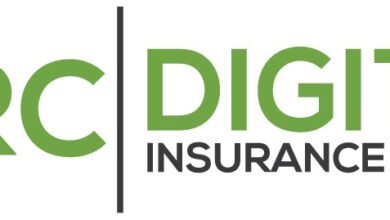How SaaS can transform public sector HR and finance systems


Implementing and running HR and finance systems has long been challenging for public sector organisations. Fortunately, providers of cloud-based SaaS HR and finance systems are changing the game by leveraging data and technologies such as AI and ML to help organisations overcome obstacles and achieve success.
Traditional HR and finance systems typically required extensive customisation, and long testing phases and were not easy to update. As a result, public sector organisations were not achieving the required returns from their people or money.
However, they were unwilling to invest in new systems due to the risks involved.
Today, cloud-based SaaS HR and finance systems offer powerful features that can be easily adopted. They also provide increased reliability, safety, security, and cost of ownership.
Let’s examine how the landscape is changing to empower HR and finance teams with better technologies and give public sector organisations a more productive future.
Every cloud is unique
The public sector is increasingly aware of cloud computing benefits such as lower maintenance costs and more current and innovative software
However, there is a temptation to simply lift and shift legacy platforms to the cloud, under the misconception this minimises business impact and commercial risks.
Unfortunately, this approach exposes organisations to ongoing inefficiencies and poor return on investment and perpetuates vendor lock-in.
Cloud-native HR, finance and planning systems like Workday combine agility and depth of functionality to present a compelling opportunity to public sector organisations.
For example, an ‘adopt, not adapt’ approach means features are pre-built and can be configured rather than customised to meet individual departments’ needs.
In addition, adapting new features to an organisation’s needs in a cloud-native system can take less than a day–months less than in a traditional cloud system.
In addition, security is automated and access to new features is simplified.
These features and capabilities make it crucial that buyers looking into cloud transformation thoroughly evaluate the market.
Reaping the rewards of SaaS implementation
The key benefits of SaaS-based HR and finance systems are felt by end-users in those departments.
For example, they can use cloud analytics to obtain practical insights in real-time from a single source of truth.
These insights can inform financial forecasting, help identify skills gaps, facilitate annual audits and more.
Cloud-based platforms that combine external data with core HR and finance data, such as Workday Prism Analytics, can free IT teams and policy and operational leaders to focus on key priorities.
For example, IT can control security while other teams and leaders can self-serve without coding or purchasing additional software licenses, enabling them to easily assess and share insights.
These platforms also integrate seamlessly with third-party systems, helping raise the productivity bar.
With SaaS-based systems, HR and finance teams become more autonomous, data-driven and engaged because they can easily find and act on the information they need, when they need it. These teams and their organisations can also seamlessly adapt systems to their changing needs.
However, help is still available when needed. Cloud-native providers like Workday and its partners can provide ongoing support and guidance to ensure organisations maximise the return on their investment and operate confidently.
Compliance with government security standards and sovereignty demands
Security resides at the core of Workday’s culture, processes and technologies, and this extends to achieving the assessments and authorisations required to deliver services to public sector organisations.
In Australia, one of Workday’s most significant recent steps was to complete an assessment to ‘protected level’ under the Information Security Registered Assessors’ Program (IRAP).
As Robin Frye, our Vice President, Cybersecurity, said recently, IRAP was ‘the tip of the spear’ in interacting with Australian public sector organisations.
“‘What is your IRAP assessment status?’ is generally one of the first questions the teams in these organisations ask us and the assessment is a bar we simply had to clear to work with highly regulated organisations managing very sensitive workloads,” Robyn explained.
IRAP complements authorisations in other markets, such as FedRAMP Authorized status at the Moderate security impact level from the United States’ Federal Risk and Authorization Management Program (FedRAMP) for Workday Government Cloud.
The IRAP assessment follows Workday’s appointment to the Australian Government’s Digital Transformation Agency (DTA) Cloud Marketplace, covering applications, including Workday Financial Management, Workday Human Capital Management (HCM), and Workday Adaptive Planning and associated infrastructure hosted in Workday’s AWS Australia region.
IRAP and FedRAMP assessments are just two outcomes of a global compliance program that covers a range of data security and privacy audits and certifications.
Public sector customers achieving robust results
An impressive and growing list of public sector customers is a testament to the benefits of adopting SaaS-based HR and finance systems from Workday.
For example, in the United Kingdom, government purchasing organisation Crown Commercial Service deployed Workday to replace separate systems for HR, finance and learning, and multiple manual offline processes.
Benefits of the deployment include the ability of senior management to access data directly and look at it live in meetings; reduce administration workloads by consolidating headcount and people cost reporting; and streamlining supplier invoice settlement and eradicating debt aged 91+ days.
The organisation has also gained access to a powerful source of continued improvement through the various enhancements and features shared as part of Workday’s biannual releases.
Other UK public sector organisations to use Workday include the Department for Education, Innovate UK, Student Loans Company, Channel 4, the Cabinet Office and Ofcom.
In the United States, organisations such as the City and County of Denver and Clark County, Washington, are achieving significant, measurable benefits with Workday. Through the auto-generation of asset accounting, Denver has saved up to 20 hours per month, allowing more time for the analysis of new assets.
Using Workday, Clark County completes payroll 60% faster than previously and saves $1.6 million per year, with 9,600 fewer general ledgers managed.
The silver lining: future-proofing for AI
With the age of AI underway, cloud-native SaaS systems offer a future-proof solution for the public sector.
These platforms can roll out new AI features as they become available, with minimal disruption to teams.
With Workday, organisations that are still evaluating where AI capabilities fit within their workflows can opt-in to these services when they are ready.
As public sector bodies navigate the changing world of work, Workday enhances employee experiences across HR and finance, using AI and ML to help elevate human capabilities and augment human decision-making. This results in better outcomes across all aspects of an organisation as it realises the full potential of its people and money.
For leaders looking to upgrade their HR and finance systems, the process no longer has to be a painful one. There’s an opportunity to break the cycle of risky programs, high costs and poor return on investment for outdated technology, and instead embrace a future of work that’s more productive, simpler and cost-effective for the public sector and its employees.
Source link





